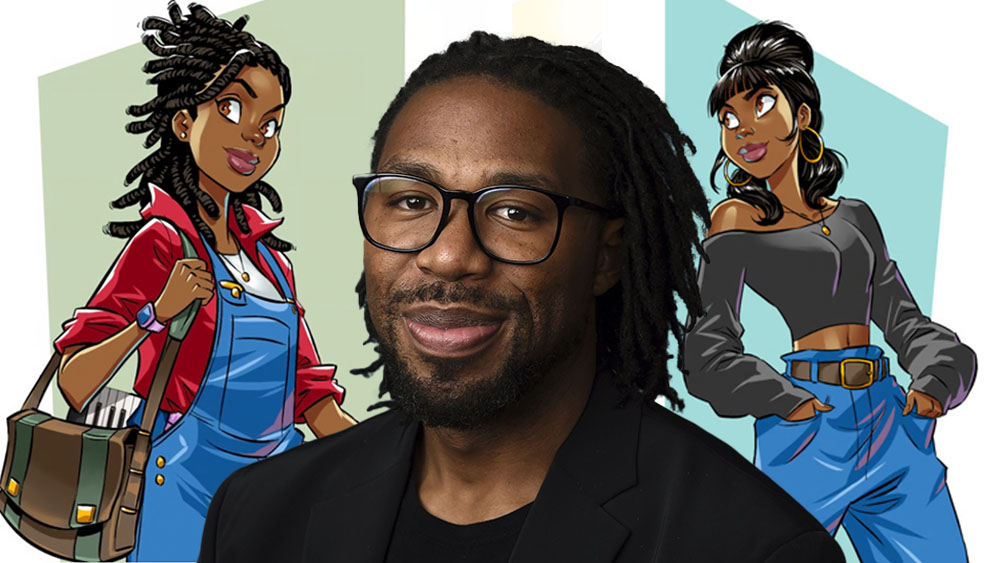Pro interview tips: how to present your design portfolio
It isn’t just your design work on show during a design job interview - your communication skills are too...
Guiding a prospective employer through your portfolio is a key part of any design job interview. Even freelancer designers and illustrators occasionally need to explain their work in order to win new briefs. If presenting fills you with dread, remember it’s a skill you can learn – and the more you talk about your work and your abilities, the better you’ll become at it. Here are some key pointers for success.
1. Relevance
Presenting your work during an interview isn’t just about picking the best-looking pieces, it’s about relating examples of your work to the skills and abilities the interviewer is looking for. Can you tell a story, supported by your work, showing how you solved a problem, applied your creativity, and met the brief?
2. Beating nerves
If you’re feeling nervous about going to an interview, ask if you can practice presenting your work to a friend – all the better if that friend is a fellow designer. Run through what you want to say a couple of times, before the interview, to automatically give you a little extra confidence.
3. What to wear?
It’s safe to say that three-piece suits aren’t necessary if you’re going for a job in the creative industries, but this doesn’t mean that all decorum has gone out the window. Select an outfit that’s neat and tidy, and demonstrates you’re serious about getting the position or winning the work.
4. Preparation
Do your homework on the studio or agency you’re going to see. If they focus on branding and corporate identity, don’t stack your portfolio with packaging and illustration examples. Learn about their clients and portfolio, and try your best to find complementary work to include in yours.
4. Confidence
Interviews are nerve-wracking, but show that you are confident when you arrive by introducing yourself and shaking hands with those who are reviewing your portfolio. Look them in the eye, be friendly and try to relax. Usually, they’ll ask you to present your portfolio before moving on to more general questions.
6. Enthusiasm
Be positive about each piece that you’ve selected: never belittle it or make excuses. If you’re not behind any of the work in your portfolio, perhaps it shouldn’t be there. Tell the interviewers what you enjoyed about the projects you worked on as much as why you like the final outcome.
7. The reveal
One particularly effective storytelling technique that you can use is to preface each example briefly before you reveal the work. Something along the lines of: “The next piece will hopefully demonstrate how I was able to think on my feet when the brief was changed five days before we were meant to submit. The typography is something special too…”
8. Listen, think, respond
Don’t get so into your patter that you can’t stop and respond to any questions that will inevitably come up. Think carefully about what’s being asked rather than rushing a response so that you can get back to your presentation. The interviewer might be prompting you towards how the work is relevant.
9. The wrap-up
It’s common for interviewees to prepare a ‘leave-behind’ – this could be as simple as a postcard or brochure displaying your best work and contact details, or even something a little more innovative. Whatever it is, you want the interviewer to remember you and your work, and to get in touch.
10. Follow-up
A day or two after the meeting, contact the people who saw you to thank them for their time and ask them if they have any feedback to offer. They may or may not get back to you, but it demonstrates that you’re polite and willing to listen and learn, and reinforces your interest.
These tips first appeared inside The Portfolio Handbook, which is on sale now – bringing you a plethora of pro advice for presenting your work with impact, whether you're looking to land more work, climb the career ladder or raise your professional standing.
Huge thanks to Jeffrey Bowman for the fantastic illustration.

Thank you for reading 5 articles this month* Join now for unlimited access
Enjoy your first month for just £1 / $1 / €1
*Read 5 free articles per month without a subscription

Join now for unlimited access
Try first month for just £1 / $1 / €1
Get the Creative Bloq Newsletter
Daily design news, reviews, how-tos and more, as picked by the editors.

The Creative Bloq team is made up of a group of art and design enthusiasts, and has changed and evolved since Creative Bloq began back in 2012. The current website team consists of eight full-time members of staff: Editor Georgia Coggan, Deputy Editor Rosie Hilder, Ecommerce Editor Beren Neale, Senior News Editor Daniel Piper, Editor, Digital Art and 3D Ian Dean, Tech Reviews Editor Erlingur Einarsson, Ecommerce Writer Beth Nicholls and Staff Writer Natalie Fear, as well as a roster of freelancers from around the world. The ImagineFX magazine team also pitch in, ensuring that content from leading digital art publication ImagineFX is represented on Creative Bloq.
